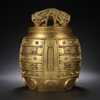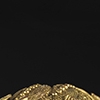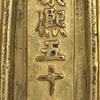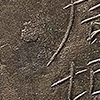|
815
A Rare Gilt Bronze Archaistic Bell, Bianzhong
|
|
KANGXI MARK AND OF THE PERIOD (1662 - 1722) |
|
Estimate
6,000,000 - 8,000,000 23,077,000 - 30,769,000 774,200 - 1,032,300
|
|
Sold Price 11,840,000
45,538,462
1,527,742
|
|
|







